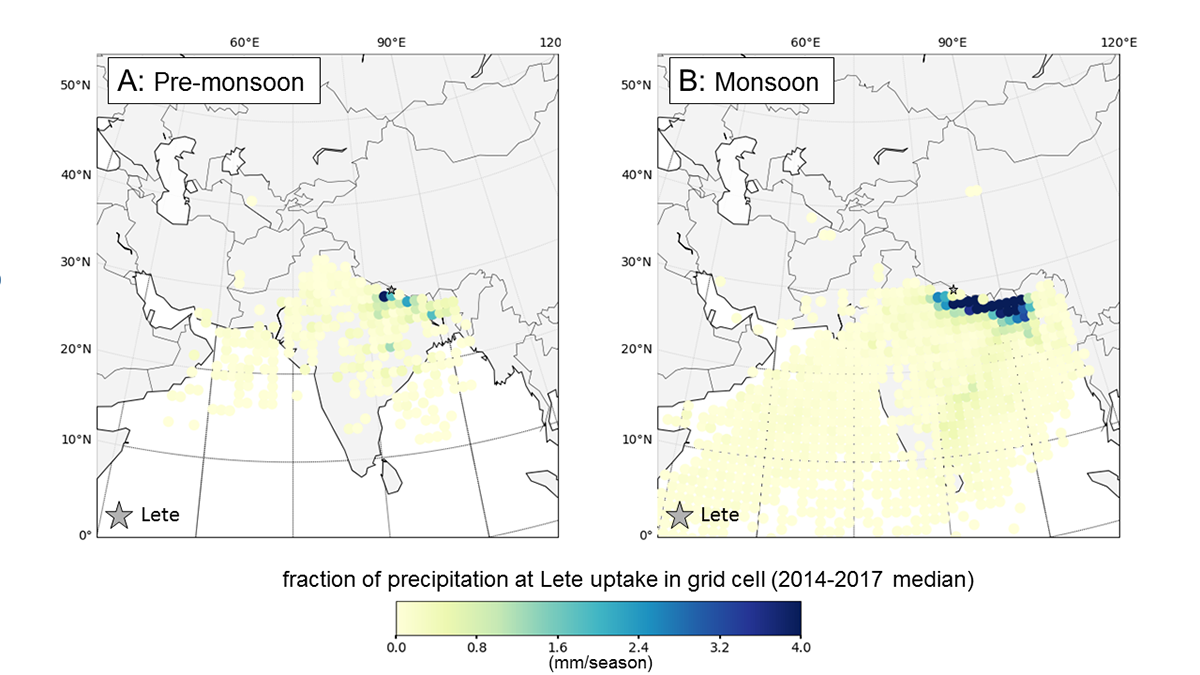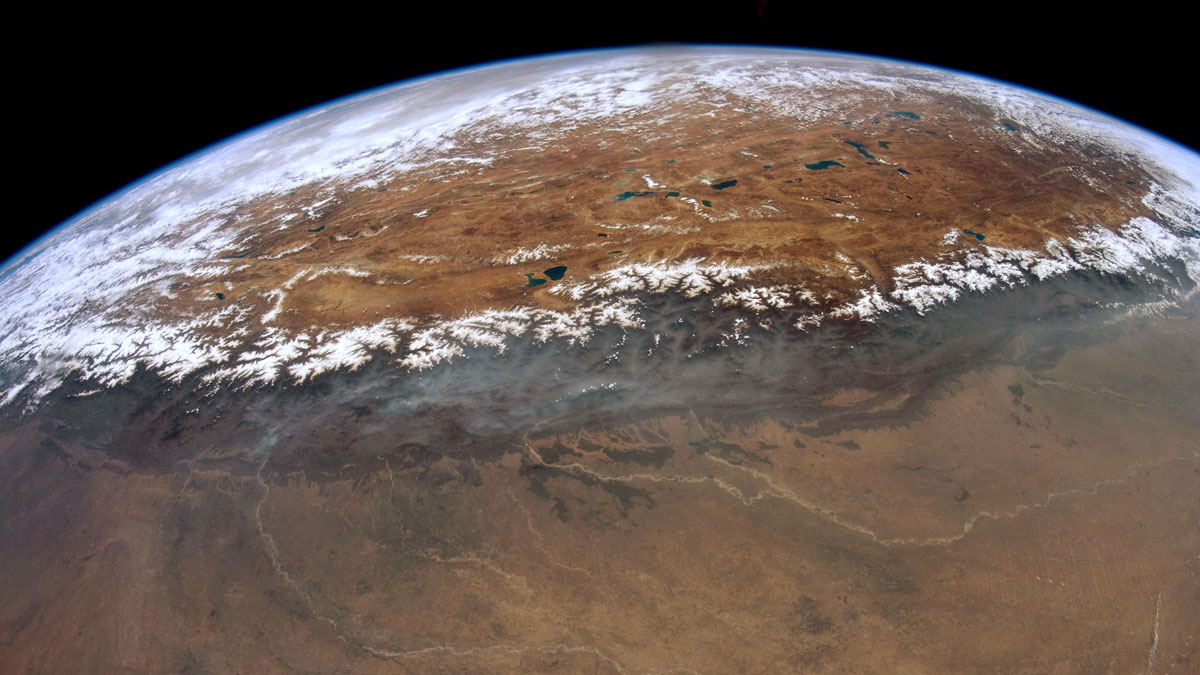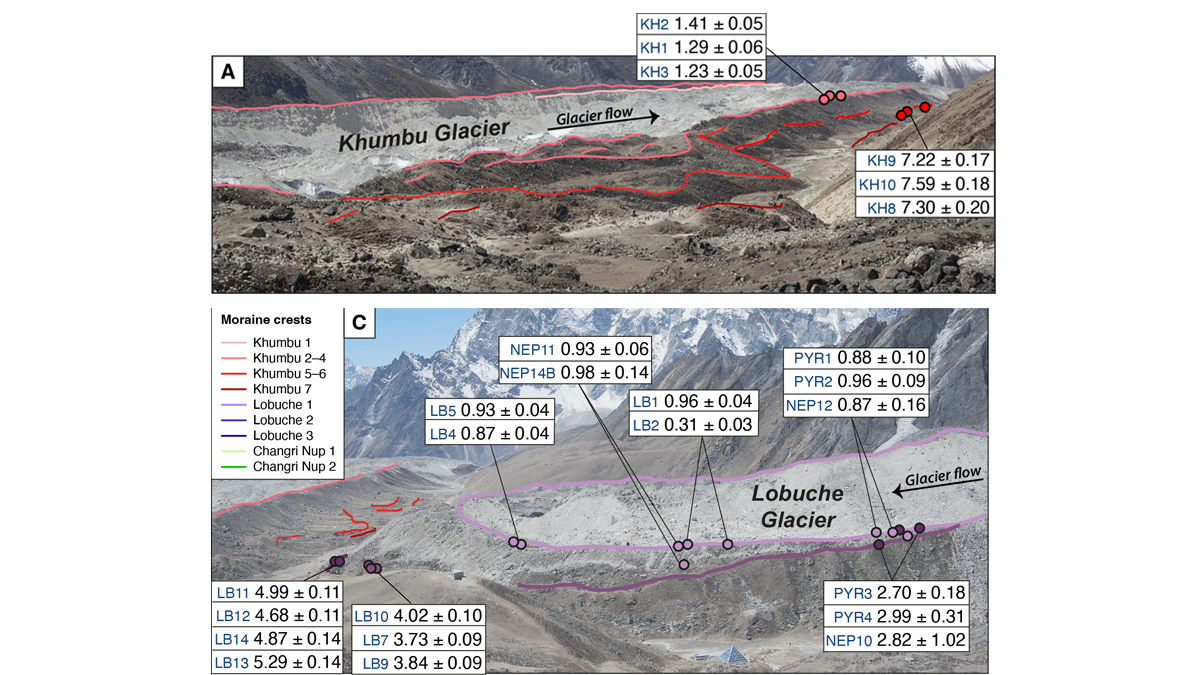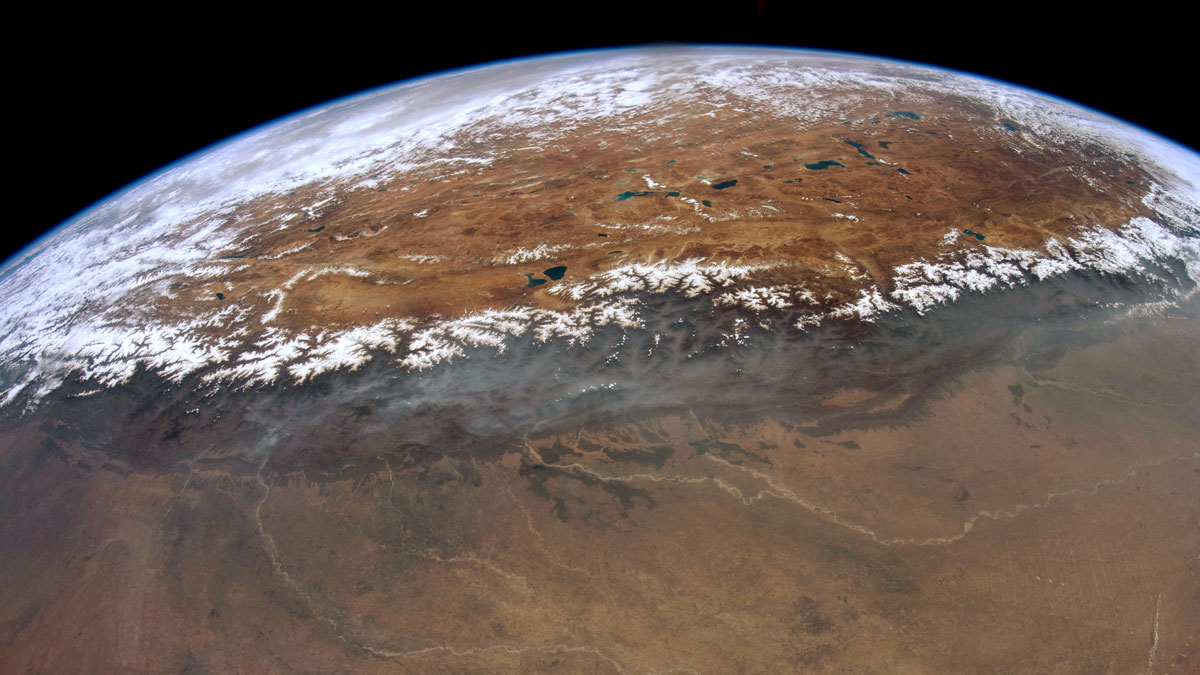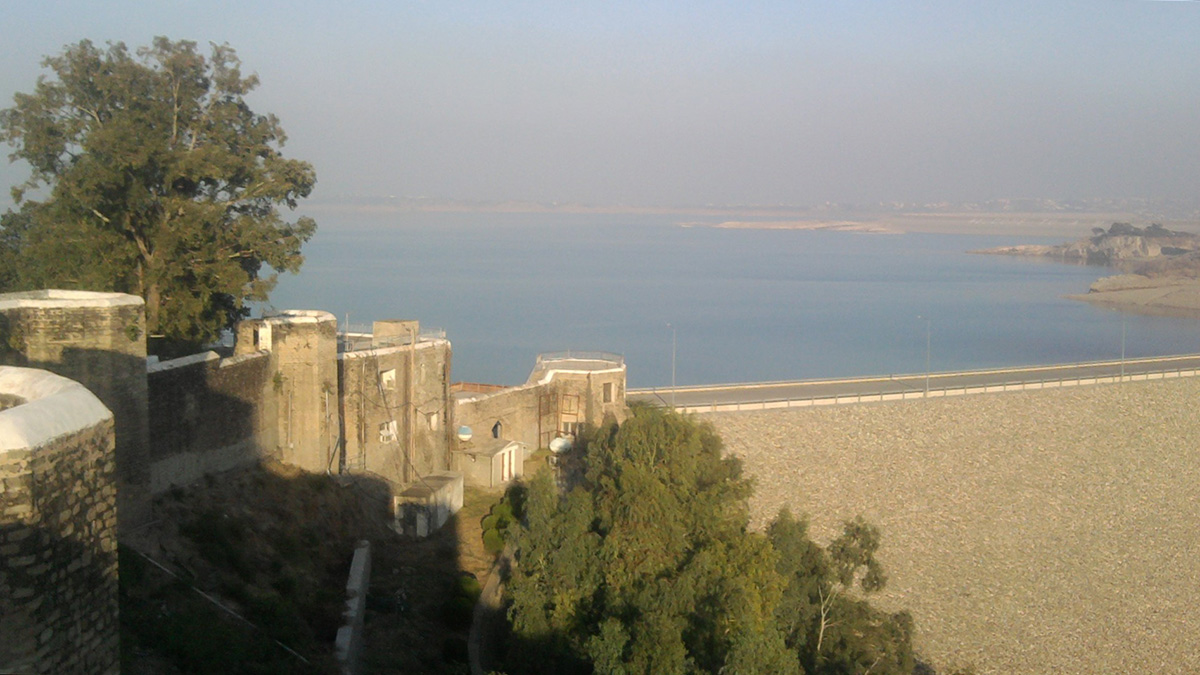Isotope study showing the partitioning of moisture into snow, ice, and groundwater allows an understanding of the relative contribution to river flow to show where Himalayan river water comes from.
Himalayas
研究揭示尼泊尔西部喜马拉雅港湾状地形的形成
研究人员通过热运动学研究发现,沿着板块汇聚界面大型逆冲断层在中下部地壳深处的地壳物质堆叠塑造了高原的生长和区域水系的发育。
Glacier Advance and Retreat: Insights From the Top of the World
New dating of glacial features reveals predictable glacier behavior in response to climate warming and cooling in the Everest region in the past 8,000 years.
Probing the Sedimentology of a Continental Megathrust
Detailed analysis of sediments covering the Main Frontal Thrust in Nepal show how climate-driven baselevel changes affect sedimentation and should be considered when inferring thrust activity.
Uncovering the Formation of the Western Nepal Embayment
Using thermokinematics, researchers have found that crustal accretion along the megathrust at mid-lower crustal depths shapes plateau growth and regional drainage development.
Los Himalayas atraviesan por una “excepcional” pérdida de masa glaciar
Los Himalayas han perdido 40% de su masa glaciar desde la Pequeña Edad de Hielo. El Este de Nepal y Bután han sufrido pérdidas de forma más acelerada.
Himalayas Are Experiencing an “Exceptional” Loss of Glacial Mass
The Himalayas have lost 40% of their glacial mass since the Little Ice Age. East Nepal and Bhutan have experienced the most rapid losses.
A Monsoon-Filled Reservoir Might Have Nudged a Fault to Fail
New research examines whether a sudden increase in water loading in Pakistan’s Mangla Dam might have been connected to the 2019 New Mirpur earthquake.
Himalayan Tectonics in the Driver’s Seat, Not Climate?
Earth’s oscillating climate is a natural guess to explain cyclic patterns in erosion, but new sediment data suggests that cyclicity may emerge from tectonic processes adding material to the Himalaya.
Understanding How Himalayan Water Towers Fill and Drain
Seismic data reveal how water is accumulated and released by Himalayan groundwater reservoirs which are key for predicting future freshwater resources for a large part of South Asia.

